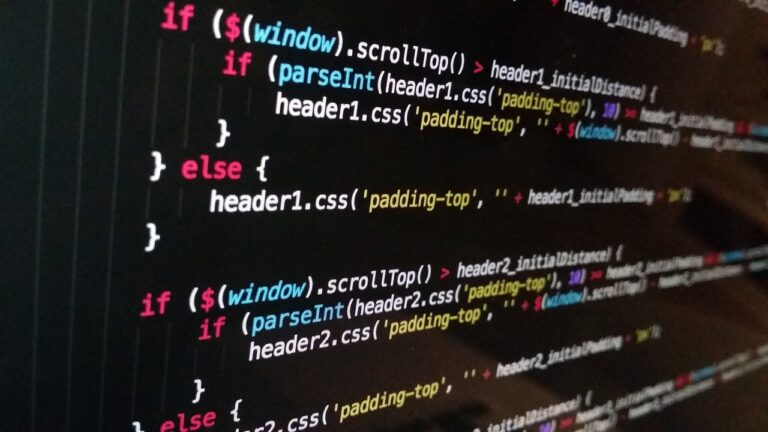JavaScript is a versatile language with a vast array of built-in methods that can greatly enhance your coding efficiency. In this article, we will explore these built-in methods and examine how they can be used to work with objects and arrays.
Working with objects and arrays is a fundamental aspect of JavaScript programming. Fortunately, JavaScript provides a wide range of built-in methods specifically designed to manipulate them. These methods enable you to perform common tasks such as iteration, manipulation, and looping with ease. By mastering these methods, you can become a more proficient JavaScript developer.
Key Takeaways
- JavaScript built-in methods provide powerful functionality for working with objects and arrays.
- By using these methods, you can greatly enhance your coding efficiency.
Manipulating Arrays with JavaScript Built-in Methods
Arrays are a fundamental part of JavaScript programming. JavaScript provides a wide range of built-in methods that allow you to manipulate arrays with ease. These methods can be used to add, remove, and modify elements within an array, and can greatly enhance your coding efficiency. In this section, we will explore some of the useful array methods provided by JavaScript.
Adding and Removing Elements
The push() method can be used to add one or more elements to the end of an array. Conversely, the pop() method removes the last element from the array. These methods are particularly useful when working with dynamic, changing data sets.
The shift() method removes the first element from an array, while the unshift() method adds an element to the beginning of an array. These methods are useful when working with ordered data sets, such as lists or queues.
Modifying Elements
The splice() method is used to add or remove elements from an array at a specified index. This method can also be used to replace existing elements with new ones. The slice() method is used to extract a portion of an array, creating a new array with the extracted elements.
Iterating and Filtering
The forEach() method can be used to iterate over each element in an array and perform a specified operation on each element. The filter() method creates a new array with elements that pass a specified test. This method is useful when you want to extract a subset of data from a larger set.
The map() method is used to create a new array with the results of calling a specified function on each element in the original array. This method is useful for manipulating data or transforming an array into a new format.
Reducing and Searching
The reduce() method is used to reduce an array to a single value by performing a specified operation on each element in the array. This method is useful for calculating sums, products, or other aggregate values from an array of data.
The find() method returns the value of the first element in an array that satisfies a specified condition. This method is useful when you need to locate a specific element in an array based on a particular criterion.
The includes() method checks whether an array includes a specified element, returning true or false. This method is useful when you need to test whether an array contains a particular value.
Working with Objects using JavaScript Built-in Methods
JavaScript objects are a crucial aspect of the language, and manipulating them can be a challenging task. Fortunately, JavaScript provides several built-in methods that allow you to perform operations on objects easily.
Let’s explore some essential object methods that can help you manipulate object properties, iterate through object keys, and do much more.
1. Object.keys()
The Object.keys() method is useful for iterating through an object’s keys. It returns an array containing the keys of an object.
Example:
Code Output const person = { name: "John", age: 30, city: "New York" }; const keys = Object.keys(person); console.log(keys);["name", "age", "city"]
2. Object.values()
The Object.values() method returns an array containing the values of an object.
Example:
Code Output const person = { name: "John", age: 30, city: "New York" }; const values = Object.values(person); console.log(values);["John", 30, "New York"]
3. Object.assign()
The Object.assign() method is used to copy the values of all enumerable properties from one or more source objects to a target object.
Example:
Code Output const target = { a: 1, b: 2 }; const source = { b: 4, c: 5 }; const result = Object.assign(target, source); console.log(result);{ a: 1, b: 4, c: 5 }
The above example assigns the values of the source object to the target object and returns the merged object.
JavaScript Built-in Methods for Iteration and Looping
Iterating through arrays and objects is a common task in JavaScript. Fortunately, JavaScript offers powerful built-in methods that simplify iteration and looping. These methods allow you to perform operations on each element of an array or each property of an object efficiently. Let’s explore these iteration and looping methods.
forEach()
The forEach() method executes a provided function once for each element in an array. This method is useful when you want to perform the same operation on each element of an array. The function accepts three arguments: the current element of the array, the index of the current element, and the array itself. Here’s an example:
const array = [1, 2, 3];array.forEach(element => console.log(element));
This will output:
1
2
3
for…of
The for…of statement creates a loop that iterates over iterable objects, such as arrays, Strings, Maps, NodeLists, and more. This loop automatically stops when it reaches the end of the iterable object. Here’s an example of using for…of with an array:
const array = [1, 2, 3];for (const element of array) {
console.log(element);
}
This will output:
1
2
3
for…in
The for…in statement creates a loop that iterates over the properties of an object. This loop is useful for iterating over object properties when the order of iteration is not important. Here’s an example:
const object = {a: 1, b: 2, c: 3};for (const property in object) {
console.log(`${property}: ${object[property]}`);
}
This will output:
a: 1
b: 2
c: 3
These are just a few of the many iteration and looping methods available in JavaScript. By mastering these methods, you can greatly enhance your coding efficiency and create more robust and powerful programs.
Performing Array Manipulations with JavaScript Built-in Methods
Arrays are commonly used for storing and manipulating sets of data. JavaScript built-in methods offer various techniques for performing common array manipulations. These methods can greatly simplify your coding tasks and improve your efficiency. In this section, we will explore some of these powerful array manipulation methods.
Filtering Arrays
The filter() method creates a new array with all elements that pass a test implemented by the provided function. The function is called for each element of the array, and if the function returns true, the element is included in the new array. Here is an example:
const numbers = [1, 2, 3, 4, 5];
const evenNumbers = numbers.filter(num => num % 2 === 0);
// evenNumbers is now [2, 4]
The map() method creates a new array with the results of calling a provided function on every element in the calling array. The function is called for each element of the array, and the returned value is added to the new array. Here is an example:
const numbers = [1, 2, 3, 4, 5];
const doubledNumbers = numbers.map(num => num * 2);
// doubledNumbers is now [2, 4, 6, 8, 10]
The reduce() method applies a function against an accumulator and each element in the array (from left to right) to reduce it to a single value. The function is called for each element of the array, and the returned value is the new value of the accumulator. Here is an example:
const numbers = [1, 2, 3, 4, 5];
const sum = numbers.reduce((acc, num) => acc + num, 0);
// sum is now 15
Manipulating Array Elements
The slice() method returns a new array containing the selected elements from the original array. The selection is specified by passing two arguments: the index of the start element (inclusive) and the index of the end element (exclusive). Here is an example:
const numbers = [1, 2, 3, 4, 5];
const slicedNumbers = numbers.slice(0, 3);
// slicedNumbers is now [1, 2, 3]
The splice() method changes the contents of an array by removing or replacing elements. The method takes three arguments: the index of the start element, the number of elements to remove, and any optional elements to add. Here is an example:
let numbers = [1, 2, 3, 4, 5];
numbers.splice(2, 2, 6, 7);
// numbers is now [1, 2, 6, 7, 5]
Conclusion
JavaScript built-in methods provide several useful techniques for working with arrays. By mastering these array manipulation methods, you can greatly simplify your coding tasks and increase your productivity. Try experimenting with these methods to see how they can make your array operations more efficient.
Simplifying Object Manipulations with JavaScript Built-in Methods
Manipulating objects is an important part of JavaScript programming, and can often be complex. However, JavaScript provides several built-in methods that can simplify object manipulations. These methods allow you to sort object properties, merge objects together, and perform other useful operations with ease. Let’s explore these handy object manipulation methods:
Object.keys()
The Object.keys() method returns an array of object keys, allowing you to easily iterate through an object’s properties. This method is especially useful when used in conjunction with other array methods, such as map() or filter().
Object.assign()
The Object.assign() method is used to copy the values of all enumerable properties from one or more source objects to a target object. This method can be used to combine objects or to create a shallow clone of an object.
“Object.assign() is a handy method for merging objects. You can use it to combine two or more objects into a single object, or to create a shallow clone of an object.”
Object.entries()
The Object.entries() method returns an array of arrays, where each sub-array contains a key-value pair from the object. This method can be useful when you need to iterate through an object’s properties and perform operations on both the key and value.
Object.values()
The Object.values() method returns an array of an object’s values, allowing you to easily iterate through an object’s properties and perform operations on the values.
Object.freeze()
The Object.freeze() method is used to prevent an object from being modified. Once an object is frozen, you cannot add, delete, or modify its properties. This method can be useful when you want to ensure that an object’s properties remain unchanged.
These built-in methods offer a variety of ways to manipulate objects with ease. By mastering these methods, you can simplify your object manipulations and become a more proficient JavaScript developer.
Advanced Techniques with JavaScript Built-in Methods
JavaScript built-in methods provide advanced techniques that can take your coding skills to the next level. In this section, we will explore some powerful methods that can help you accomplish more complex tasks.
Deep Cloning Objects
JavaScript objects are assigned by reference, which means that when you create a new variable and set it equal to an existing object, you’re merely creating a new reference to that original object. This can cause issues when you need to modify an object without affecting the original reference. The solution is to create a deep clone of the object, which is a complete, distinct copy of the object.
Example:
const originalObject = { name: "John", age: 30 }; const clonedObject = JSON.parse(JSON.stringify(originalObject));
In the example above, we used a combination of JSON.stringify and JSON.parse to create a deep clone of the original object.
Flattening Multidimensional Arrays
Flattening a multidimensional array means converting it into a one-dimensional array. This can be useful when you need to perform operations on the elements of the array as a whole.
Example:
const multiDimensionalArray = [[1, 2], [3, 4], [5, 6]]; const flattenedArray = multiDimensionalArray.flat();
In the example above, we used the built-in flat method to flatten the multidimensional array.
Finding Unique Elements in an Array
If you have an array with duplicate elements, you may need to find and remove those duplicates. The following method uses the Set object to create a new array with unique elements.
Example:
const duplicateArray = [1, 2, 2, 3, 4, 4, 5]; const uniqueArray = [...new Set(duplicateArray)];
In the example above, we used the Set object and spread operator to create a new array with unique elements.
Error Handling with JavaScript Built-in Methods
When writing code, errors are bound to occur. In JavaScript, you can handle these errors using the built-in method try-catch-finally block. This method allows you to try a block of code and catch any errors that may result from it.
The try block contains the code that you want to test for errors. If an error occurs within the try block, it is caught by the catch block. The catch block contains the code that responds to the error that was caught.
The finally block contains the code that is executed regardless of whether an error was thrown or caught. This block is often used to close connections, release resources, or perform other operations that need to be executed regardless of whether an error occurred.
Note: It’s important to catch errors in your code to prevent them from crashing your application. However, catching errors can also make it more difficult to debug your code. It’s important to strike a balance and ensure that your error handling code is both robust and debuggable.
In addition to the try-catch-finally block, JavaScript also provides several other error handling methods. These include the throw statement, the Error object, and the Promise object. The throw statement is used to create custom errors that can be caught by the catch block. The Error object provides information about errors that occur within your code, while the Promise object is used to handle asynchronous operations and their errors.
When using error handling methods in JavaScript, it’s important to ensure that your error messages are clear and informative. This will make it easier to identify and fix errors in your code. You can use console.log or alert statements to display error messages to the user or to the console.
Efficient Data Manipulation with JavaScript Built-in Methods
JavaScript built-in methods offer a range of powerful solutions for data manipulation tasks. Whether you are sorting arrays, filtering data, or manipulating strings, these methods can simplify the process and make your code more efficient.
Sorting Arrays
JavaScript provides several built-in methods to sort arrays, including sort(), which sorts an array in ascending or descending order based on a given criteria. For example, to sort an array of numbers in descending order:
let numbers = [4, 2, 7, 1, 3];
numbers.sort((a, b) => b - a);
console.log(numbers); // [7, 4, 3, 2, 1]
You can also use localeCompare() to sort arrays of strings alphabetically. This method compares two strings and returns a value indicating their order. For example, to sort an array of names alphabetically:
let names = ["Alice", "Bob", "Charlie", "Eve"];
names.sort((a, b) => a.localeCompare(b));
console.log(names); // ["Alice", "Bob", "Charlie", "Eve"]
Filtering Arrays
The filter() method allows you to create a new array that contains only elements that meet a certain criteria. For example, to filter out all even numbers from an array:
let numbers = [1, 2, 3, 4, 5];
let oddNumbers = numbers.filter(num => num % 2 !== 0);
console.log(oddNumbers); // [1, 3, 5]
Manipulating Strings
JavaScript built-in methods can also be used to manipulate strings. For example, the toLowerCase() method converts all characters in a string to lowercase:
let str = "HELLO, WORLD!";
console.log(str.toLowerCase()); // "hello, world!"
The startsWith() method checks whether a string begins with a specified character or sequence of characters:
let str = "Hello, world!";
console.log(str.startsWith("Hello")); // true
Conclusion
JavaScript built-in methods provide convenient and efficient solutions for a wide range of data manipulation tasks. Whether you need to sort arrays, filter data, or manipulate strings, these methods can simplify your code and make you a more productive developer.
Conclusion
JavaScript built-in methods provide an extensive range of functionality to enhance your coding efficiency. Whether you are working with objects or arrays, these methods offer convenient ways to manipulate and iterate through your data. By mastering these built-in methods, you can become a more proficient JavaScript developer and write better code.
Start Practicing Today
If you are new to JavaScript programming, take the time to explore these built-in methods and their capabilities. Start practicing today to familiarize yourself with their syntax and functions. With practice, you can become an expert in using JavaScript built-in methods to create efficient programs.







